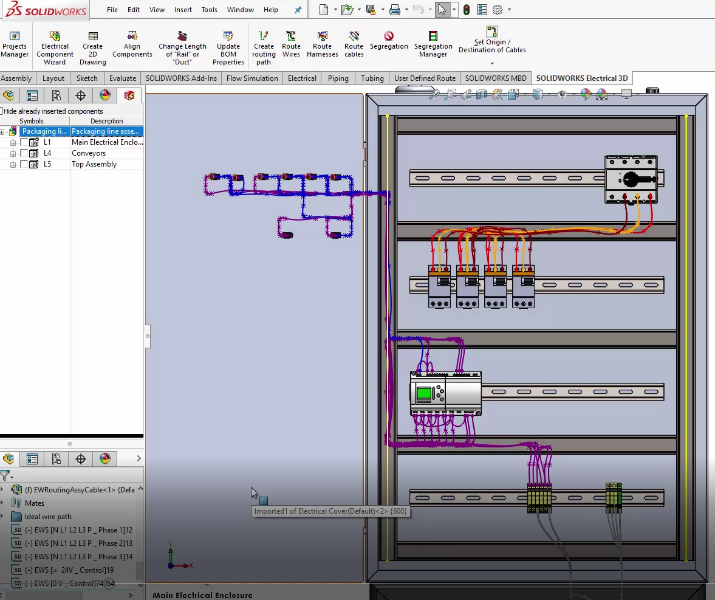An electrical designer works with mechanical designers, engineers, clients, and fabricators to produce design documentation for electrical equipment. Not all industries require a dedicated electrical designer. Equipment that with only utility power or a simple electrical schema does not typically require a dedicated electrical designer. In this article, you will learn job roles, design packages used, credentials, and potential employers of electrical designers.
Job Role
An electrical designer takes engineering calculations, datasheets, reference drawings, and project requirements to generate required electrical fabrication drawings. These drawings are one-line and three-line diagrams, and may also include electrical drawings such as a control panel lay-out drawing or cable tray depiction. Electrical designers usually take direction from an electrical engineer and work intimately with the shop during an electrical build.
Electrical designers may also bear responsibility for load calculations, cable sizing, conduit fill calculations, and layout drawings. They may support electrical engineers, mechanical designers, and project engineers as project needs dictate. The degree of electrical designer engagement on fabrication drawings varies by company. Some companies allow electricians latitude on wiring schema whereas others tightly control this process via drawings.
Electrical designers must able to review and incorporate specifications. Designers must be aware of all regulatory requirements in addition to the client’s requirements for equipment access. These regulatory requirements include, but are not limited to: NEC code, OSHA requirements, state and local building laws, and environmental regulations.
Electrical designers have a smaller scope of document supply than mechanical designers. Thus, electrical designers do not have a supporting drafter function.
Design Packages Used
Electrical designers typically do not need to be proficient 3D modelers. Conveying electrical requirements to electricians usually can be accomplished via working in a 2D package. The most common 2D package is AutoCAD Electrical. AutoCAD Electrical provides an enhanced ability to create, modify, and document electrical controls systems via an industry-specific toolset.
Speciality 3D packages, such as Solidworks Electrical, provide 3D renderings of PCB layouts, electrical schematics, and routing. 3D electrical packages see much lower adoption rates than mechanical 3D packages. The is because the primary advantage of using a mechanical 3D package is interference detection. While this value may occur in 3D electrical software, generally interference detection for electrical does not see the same priority.

Credentials
In contrast to engineering jobs, electric designer credentials focus more on work experience. Many electric designers have previous work experience as electricians. The best designers draw from their industry expertise or quickly assimilate this knowledge from their peers.

Formal programs offered by community colleges provide software insight. Some community colleges offer a drafting certification program which may be leveraged for an entry-level drafting position.
Firms That Employ Electrical Designers
Electrical designers see employ by three major types of firms: equipment builders, engineering houses, and operators.
Equipment builders use an electrical designer’s expertise to provide electrical control and direction to electricians. Electrical designers typically are a stand-alone job role when the application demands a deep understanding of NEC code engineering and electrical theory. Engineering houses employ electrical designers to oversee and integrate electrical packages.
Operators employ electrical designers in rare cases. These cases may involve specialized projects or when a designer possesses a highly differentiated skillset. Typically engineers, project managers, and administrative support comprise the core team of an operator. The generation of electrical drawings is subcontracted to an engineering house that acts as the operator’s agent.
Electrical designers at equipment builders typically see lower wages than designers at engineering houses. This reflects two key principles. Engineering houses generally hire and release designers more frequently as well as generally compensating all employees at a higher rate than equipment builders.
In 2021, the medium wage for an electrical designer was $27.63 an hour, according to payscale.com. Despite that, its not uncommon for a electrical senior designer to make a 6 figure income. Electrical designers tend to be paid wages or classified as non-exempt, meaning they are eligible for overtime.



